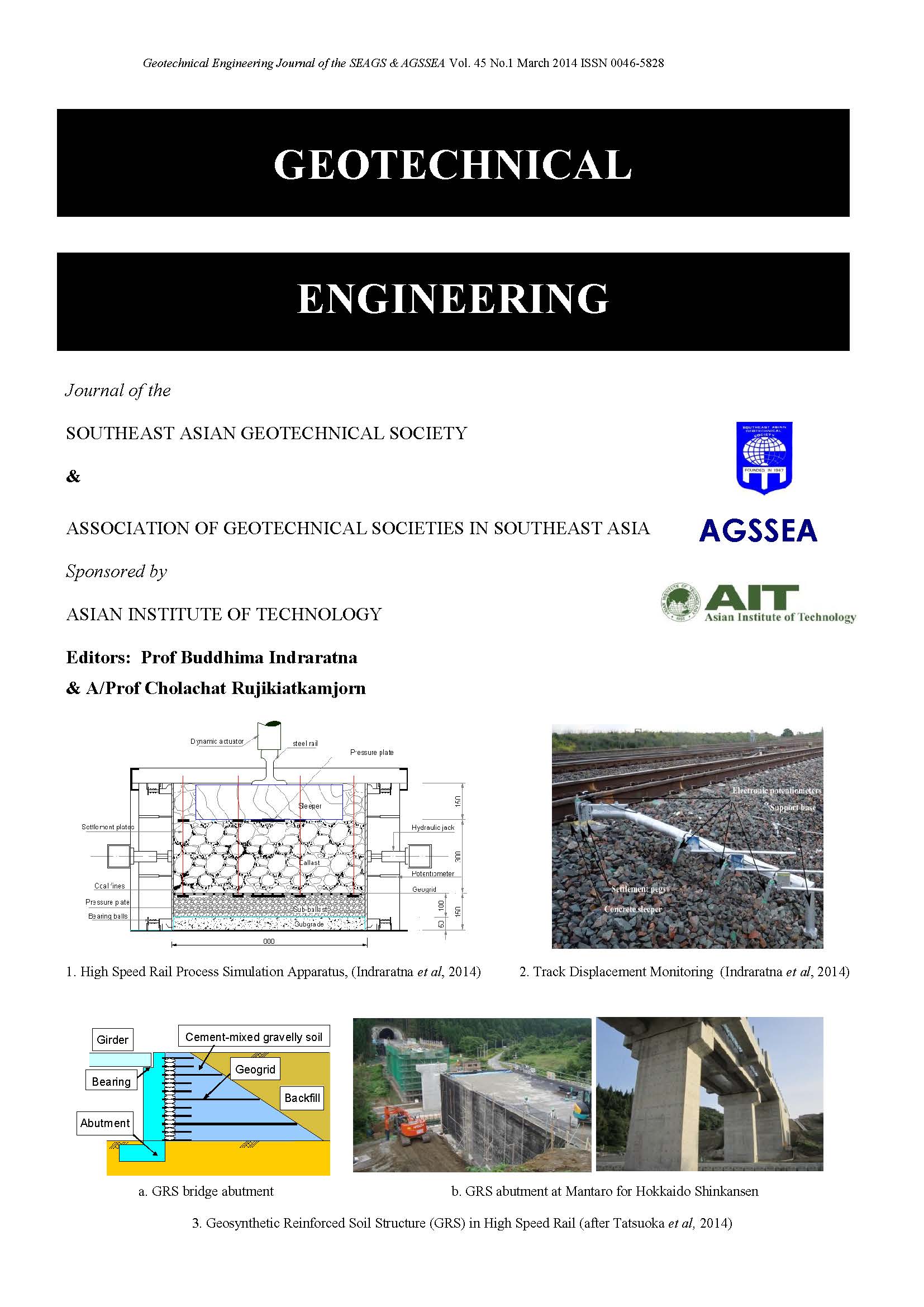Maintenance Model for Railway Substructure
Main Article Content
Abstract
A maintenance model for railway substructure is proposed by combining a ballast deformation model presented in this study and a previously developed railway track subgrade model. This model is used to predict the deformation of railway track and to estimate a schedule for ballast maintenance and tamping. The prediction of the permanent deformation of fouled railway ballast is based on an empirical ballast deformation model and a statistical technique called “Support Vector Regression – SVR”. Both approaches are based on data obtained from a large-scale cyclic triaxial (LSCT) apparatus for the fouled ballast. The empirical deformation model of railway ballast incorporates the strong correlation between the plastic strain rate of ballast under cyclic loading with fouling and stress conditions (overall prediction R2=0.89). The concept of statistical learning regression (i.e., Support Vector Regression, SVR) was implemented to compare the predictions from the statistically based model with those from the empirical deformation model. The results show a strong correlation (R2=0.98) between the predicted and calculated rate of plastic strain of ballast by SVR. The maintenance planning model in this study was developed based on the empirical deformation model of ballast and predicts the intervals between corrective maintenance activities (e.g., tamping) and necessity for preventive maintenance activities (e.g., undercutting or drainage systems, etc.) in the railway track.
Article Details

This work is licensed under a Creative Commons Attribution-NonCommercial-NoDerivatives 4.0 International License.
Copyright © 2019 Association of Geotechnical Societies in Southeast Asia (AGSSEA) - Southeast Asian Geotechnical Society (SEAGS).


